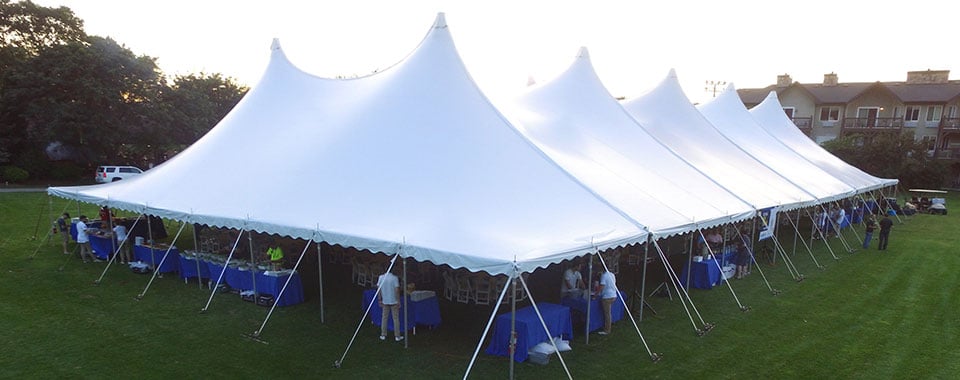When you rent a wedding tent from wedding tent rentals, you want it to be secure and beautiful. The last thing you want is for the tent to be blown off by wind on the most important and memorable day of your life—your wedding day.
How do you secure a wedding tent? Here is how to go about it:
Correctly set up the tent
Everything begins here, as there is no way you will adequately secure the tent if it’s not correctly set up. Thankfully, it’s easy to set up most tents.
This is because most tents feature a no-assembly design, meaning that they come with pre-built frames that need to be expanded, and the tent will stand on its own.
Begin with opening the carrying case and expand the frame from each of the four legs. You should then ensure that each of the height-adjustable legs is set to the same height. You also should ensure that the tent’s fabric is correctly attached in place.
After doing this, gradually expand the tent and attach any sides or tent accessories. As a final move, double-check any tie-downs or Velcro fasteners to ensure a secure hold.
Be cautious of the site.
What is the condition of the site? Even with proper installation, your tent might fall over due to the condition of your site. For example, if the wedding site is uneven, chances are high the tent will topple, likewise if the site is soggy.
When setting up your tent, be cautious of the terrain around you. As a rule of thumb, choose a location with an even ground. Install it in areas with short grass and semi-firm soil as it’s best for staking.
If the location has concrete or asphalt, ensure that the tent is clear of any potholes or large cracks.
If having the event during the rainy season, be cautious of the water and stay away from nearby trees and bushes as they can rip the tent’s fabric, and you are in a problem with the tent rental company.
Use tent weights in concrete or asphalt.
When setting up the tent on hard ground such as concrete or asphalt, use weights. Place weights on either leg of the tent to prevent it from sliding, swaying, or blowing. Some of the best weights you can use are weighted sandbags.
When choosing the sandbags, ensure that they match the theme of the event. You don’t want them to look out of place, giving your event a weird look.
If the sandbags aren’t adding enough weight, fill a 5-gallon bucket with sand and tie it to the crossbar of your tent’s frame using a rope or strapping. For the best results, ensure that the bucket is fully grounded and not hanging. If still the weight isn’t enough, use two buckets.
Anchor the tent using stakes
If you are setting up the tent on soft ground, such as on the lawn or backyard, stakes are the way to go. Made from metallic materials and measuring about six inches to a foot in length, tent stakes will fasten the base of your tent and stick into the ground providing the much-needed hold.
Most tents come with stake holes on their legs, so all you need to do is insert the stakes.
Some rental companies will rent the stakes together with the tent, while others will rent them separately. To avoid surprises, know this beforehand.
When choosing the stakes, go with the strongest material. Avoid stakes made from plastic or low-grade metals as they are likely to bend, break, or even be pulled from the ground in the event of a strong wind.
To securely hold the tent in place, choose stakes made from steel as they provide a better hold. Also, ensure that the stakes are appropriately shaped to grab onto the tent’s legs while sticking to the ground.
When choosing the stakes at the event rentals Rockland NY company, stay away from straight stakes without any form of head as they can detach from the tent legs. Instead, go for stakes that feature hooks or loops on their ends to provide a secure hold.
When it comes to securing the tent, hammer the stakes into the ground.


